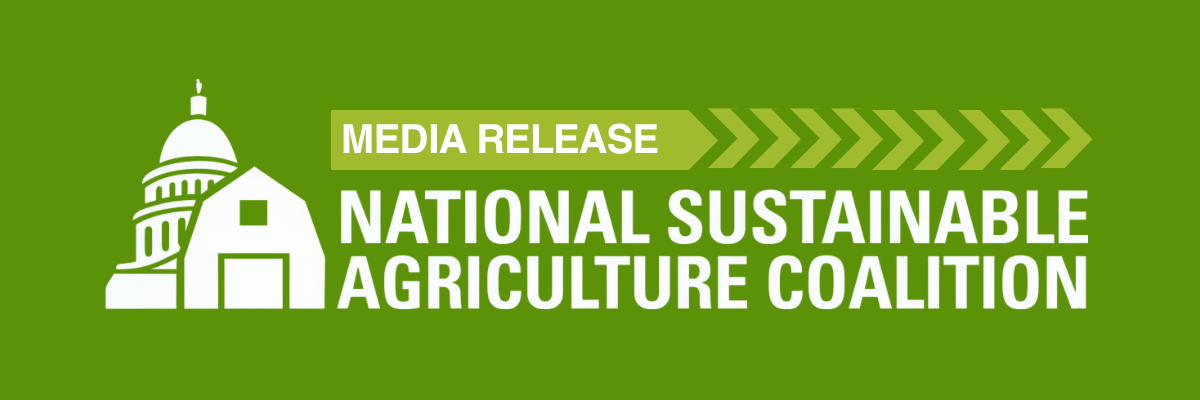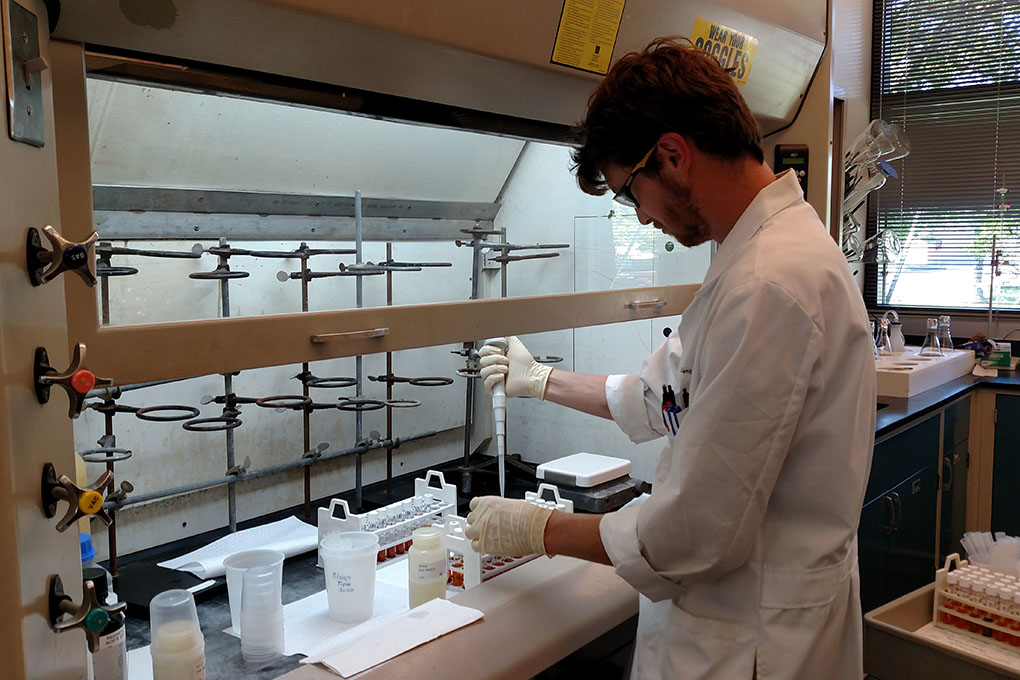As data centers multiply in the Chesapeake region, water use increases too – Bay Journal

Report on the Environmental Impact of Data Center Expansion in the Chesapeake Bay Watershed
Introduction: Digital Infrastructure and Sustainable Development Challenges
The rapid expansion of digital infrastructure, particularly data centers housing computer systems for internet and artificial intelligence (AI) activities, presents significant environmental challenges within the Chesapeake Bay watershed. Northern Virginia, the global epicenter for these facilities, is experiencing growth that is now extending into Maryland and Pennsylvania. This report analyzes the impacts of this expansion on water supply, energy consumption, and land use, evaluating these challenges through the framework of the United Nations Sustainable Development Goals (SDGs).
Analysis of Environmental Impacts and SDG Alignment
Intensifying Pressure on Freshwater Resources: A Challenge to SDG 6
The proliferation of data centers, fueled by the computational demands of new AI models, places immense strain on local water resources, directly challenging the objectives of SDG 6: Clean Water and Sanitation. The core issue is the industry’s reliance on water for cooling systems.
- Primary Cooling Method: Most data centers utilize evaporative cooling systems, which consume large volumes of water to dissipate heat from servers. This water is primarily sourced from local watersheds, such as the Potomac River basin, which also supplies drinking water to millions of residents.
- Escalating Water Demand: The water footprint of the industry is growing exponentially.
- Google’s self-owned data centers withdrew nearly 8 billion gallons of water in 2023, with almost 80% being potable freshwater.
- Projections indicate that by 2027, global AI-related water demand could equal the consumption of half the United Kingdom.
- A Lawrence Berkeley National Laboratory report projects U.S. data center water use could reach 74 billion gallons annually by 2028, severely stressing regional water infrastructure.
- Lack of Transparency: A significant barrier to sustainable management is the lack of public reporting on water usage by most data center operators. This opacity hinders progress toward SDG Target 6.b, which calls for supporting the participation of local communities in improving water and sanitation management.
The Nexus of Digital Infrastructure, Energy, and Sustainable Communities: An Analysis of SDGs 7, 9, and 11
The growth of data centers intersects critically with goals for energy, infrastructure, and community sustainability. While this growth supports SDG 9: Industry, Innovation, and Infrastructure by building the backbone of the digital economy, its resource intensity creates conflicts with other key development goals.
- Energy Consumption (SDG 7): The demand for electricity from data centers in Virginia nearly doubled in the latter half of 2024. This massive energy consumption challenges the objectives of SDG 7: Affordable and Clean Energy. The industry’s exploration of nuclear power, while a low-carbon source, introduces further complexities, as nuclear plants are also highly water-intensive for their cooling needs.
- Sustainable Infrastructure (SDG 9): The choice of cooling technology represents a critical trade-off in sustainable infrastructure design.
- Evaporative Cooling: High water consumption.
- Air Cooling: Lower water use but significantly higher electricity consumption.
- Reclaimed Water: Some facilities in Loudoun County, VA, use reclaimed water, a practice that aligns with circular economy principles and SDG 12: Responsible Consumption and Production, but is not yet standard practice.
- Community Impact (SDG 11): The high concentration of data centers in “Data Center Alley” strains local resources and impacts the goals of SDG 11: Sustainable Cities and Communities. Competition for water, energy, and land can compromise quality of life and the sustainable development of the region.
Regional Impact Assessment: The Potomac River Basin
The Potomac River basin serves as a critical case study for the localized impacts of global data center growth. Research conducted by the Interstate Commission on the Potomac River Basin highlights a concerning trajectory for water demand.
- Current Consumption: Data centers currently consume approximately 2% of the water from the Potomac River basin, a figure that rises to 8% during peak summer months.
- Future Projections: Unconstrained growth using current cooling technologies could lead to data centers consuming over 33% of the Potomac’s water by 2050, requiring 200 million gallons per day. This level of withdrawal poses a direct threat to the region’s water security and could jeopardize the health of the downstream Chesapeake Bay ecosystem, impacting SDG 14: Life Below Water.
Conclusion and Recommendations for Responsible Growth (SDG 12)
The current growth trajectory of the data center industry in the Chesapeake Bay watershed is in direct conflict with multiple Sustainable Development Goals, particularly those related to water, energy, and sustainable communities. To align industry expansion with SDG 12: Responsible Consumption and Production, a strategic shift is required.
- Enhance Transparency: Mandate public reporting of water and energy consumption to enable effective resource management and hold corporations accountable.
- Promote Sustainable Technologies: Incentivize the adoption of water-efficient cooling technologies and the widespread use of reclaimed or non-potable water sources.
- Implement Integrated Planning: Regional authorities must conduct integrated planning that balances the economic benefits of data centers with the environmental and social needs of communities, ensuring the long-term health of the Potomac River and Chesapeake Bay.
- Foster Innovation: Encourage investment in research and development for energy- and water-efficient computing and cooling solutions, advancing the sustainability aspect of SDG 9.
Analysis of Sustainable Development Goals (SDGs) in the Article
1. Which SDGs are addressed or connected to the issues highlighted in the article?
-
SDG 6: Clean Water and Sanitation
The article’s primary focus is on the massive water consumption of data centers for cooling purposes. It discusses the strain on local water sources like the Potomac River basin, the competition with drinking water supplies, and the growing concern over freshwater scarcity. The text explicitly states, “freshwater scarcity has become one of the most pressing challenges,” directly linking the industry’s growth to water-related sustainability issues.
-
SDG 7: Affordable and Clean Energy
The article highlights the immense energy demand of data centers, noting that their growth in Virginia “nearly doubled the demand for electricity from the region’s grid.” It also touches upon the search for alternative energy sources, mentioning that “Data center companies are increasingly looking to nuclear energy as a cleaner source of energy,” which connects to the goal of transitioning energy systems.
-
SDG 9: Industry, Innovation and Infrastructure
The article is centered on the data center industry and its rapidly expanding infrastructure. It describes the “warehouse-like facilities” and their growing “footprint” in Virginia, Maryland, and Pennsylvania. The discussion of different cooling technologies (evaporative, air cooling, reclaimed water) relates to the goal of making industries and infrastructure more sustainable and efficient.
-
SDG 11: Sustainable Cities and Communities
The issues are framed within a specific geographical context, “Data Center Alley” in Northern Virginia, and its expansion into other communities. The article points to potential conflicts over resources, stating that the water-cooling needs of AI “could compete with the region’s other water needs,” which directly impacts the sustainability and resilience of these communities.
-
SDG 12: Responsible Consumption and Production
The core theme is the unsustainable consumption pattern of a major industry. The article details the enormous and growing demand for natural resources (water and energy) to fuel internet activity and AI. Projections that water use could “double or even quadruple by 2028” and “further stressing the water infrastructures” exemplify a pattern of consumption that is not sustainable.
-
SDG 14: Life Below Water
The article establishes a direct link between the land-based activities of data centers and a major aquatic ecosystem. It notes that the water is drawn from the “Potomac River basin” which then “flow[s] to the Chesapeake Bay.” The large-scale withdrawal of freshwater from a river system that feeds an estuary like the Chesapeake Bay implies potential impacts on water quality, flow, and the overall health of marine and estuarine life.
2. What specific targets under those SDGs can be identified based on the article’s content?
-
Target 6.4: By 2030, substantially increase water-use efficiency across all sectors and ensure sustainable withdrawals and supply of freshwater to address water scarcity.
The article directly addresses this target by highlighting the inefficiency and high volume of water use. The projection that data centers in the Potomac basin could consume “200 million gallons of Potomac water per day” by 2050 underscores the challenge of ensuring sustainable withdrawals. The entire discussion revolves around the need to manage the sector’s “thirsty” nature to avoid future water stress.
-
Target 6.5: By 2030, implement integrated water resources management at all levels, including through transboundary cooperation as appropriate.
The article mentions the work of the “Interstate Commission on the Potomac River Basin,” a body dedicated to managing a shared water resource. The research conducted by its scientist, Alimatou Seck, to calculate cumulative water use across the basin is a clear example of integrated water resource management in action.
-
Target 7.3: By 2030, double the global rate of improvement in energy efficiency.
The article implies a challenge to this target by stating that the growth of data centers “nearly doubled the demand for electricity from the region’s grid.” It also notes that some less water-intensive cooling options, like air cooling, use “more electricity,” illustrating the trade-offs involved in improving resource efficiency.
-
Target 9.4: By 2030, upgrade infrastructure and retrofit industries to make them sustainable, with increased resource-use efficiency and greater adoption of clean and environmentally sound technologies and processes.
This target is relevant through the discussion of different cooling methods. The article mentions that “some data centers use reclaimed water for cooling purposes,” which is an example of adopting a more environmentally sound process to increase resource-use efficiency.
-
Target 12.2: By 2030, achieve the sustainable management and efficient use of natural resources.
The article is a case study of the challenges to this target. It details how the data center industry’s growth leads to massive consumption of water and energy. The finding that “Google’s own sustainability report noted that the company’s self-owned data centers alone withdrew nearly 8 billion gallons of water… in 2023” is a stark illustration of the scale of natural resource use that needs to be managed sustainably.
3. Are there any indicators mentioned or implied in the article that can be used to measure progress towards the identified targets?
-
Indicator 6.4.1: Change in water-use efficiency over time.
The article provides several data points that can serve as a baseline for this indicator. Examples include: “Google’s water use increased by about 20% per year,” and the projection that U.S. data center water use could reach “up to 74 billion gallons per year… by 2028.” Tracking these figures over time would measure changes in efficiency.
-
Indicator 6.4.2: Level of water stress: freshwater withdrawal as a proportion of available freshwater resources.
The article provides direct data for this indicator. It states that data centers in the Potomac River basin “currently consume about 2% of the water used,” a figure that “shoots up to 8% during the summer.” The projection that this could “surpass 33% by 2050” is a direct measurement of future water stress.
-
Indicator 12.2.1: Material footprint.
The article uses total water consumption as a proxy for the material footprint of the data center industry. Specific figures like “Google’s… data centers alone withdrew nearly 8 billion gallons of water and consumed more than 6 billion gallons of freshwater for on-site cooling in 2023” serve as a direct measure of this indicator.
-
Indicator 9.4.1: CO2 emission per unit of value added (implied).
While not explicitly mentioning CO2, the article’s focus on massive electricity demand (“nearly doubled the demand for electricity”) and the turn towards “cleaner” sources like nuclear power implies a concern over the emissions footprint of the industry. The amount of electricity consumed is a direct precursor to calculating emissions.
4. Table of SDGs, Targets, and Indicators
| SDGs | Targets | Indicators |
|---|---|---|
| SDG 6: Clean Water and Sanitation | Target 6.4: Substantially increase water-use efficiency and ensure sustainable withdrawals.
Target 6.5: Implement integrated water resources management. |
Indicator 6.4.1 (Change in water-use efficiency): “Google’s water use increased by about 20% per year.”
Indicator 6.4.2 (Level of water stress): Data centers consume “8% [of Potomac water] during the summer,” with projections this could “surpass 33% by 2050.” |
| SDG 7: Affordable and Clean Energy | Target 7.3: Double the rate of improvement in energy efficiency. | (Implied) Energy Consumption Growth: “The growth of data center construction in Virginia alone nearly doubled the demand for electricity from the region’s grid.” |
| SDG 9: Industry, Innovation and Infrastructure | Target 9.4: Upgrade infrastructure and retrofit industries to make them sustainable. | (Implied) Adoption of Sustainable Technologies: The article notes that “some data centers use reclaimed water for cooling purposes,” which serves as a qualitative indicator of progress. |
| SDG 11: Sustainable Cities and Communities | (Target 11.5 implied) Reduce the adverse per capita environmental impact of cities. | (Implied) Competition for Resources: The prediction that AI’s water needs “could compete with the region’s other water needs” indicates a growing environmental pressure on communities. |
| SDG 12: Responsible Consumption and Production | Target 12.2: Achieve the sustainable management and efficient use of natural resources. | Indicator 12.2.1 (Material Footprint): “Google’s… data centers alone withdrew nearly 8 billion gallons of water… in 2023.” The sector’s projected use could reach “74 billion gallons per year… by 2028.” |
| SDG 14: Life Below Water | Target 14.1: Prevent and significantly reduce marine pollution from land-based activities. | (Implied) Pressure on Aquatic Ecosystems: The large-scale water withdrawal from the “Potomac River basin,” which “flow[s] to the Chesapeake Bay,” is an indicator of pressure from a land-based industry on a major estuary. |
Source: bayjournal.com

What is Your Reaction?
 Like
0
Like
0
 Dislike
0
Dislike
0
 Love
0
Love
0
 Funny
0
Funny
0
 Angry
0
Angry
0
 Sad
0
Sad
0
 Wow
0
Wow
0








































































